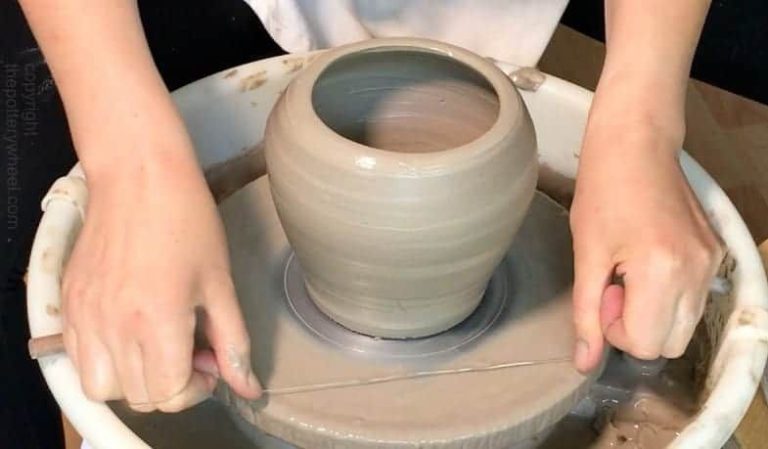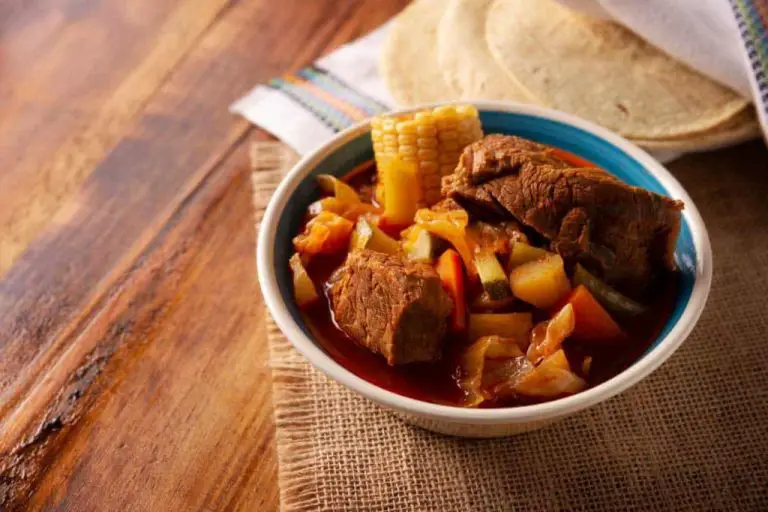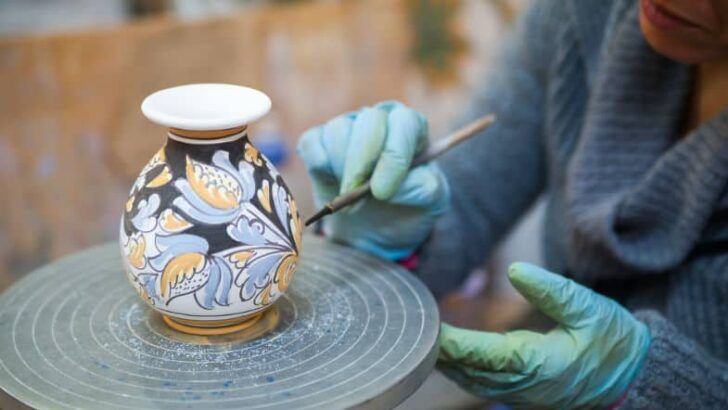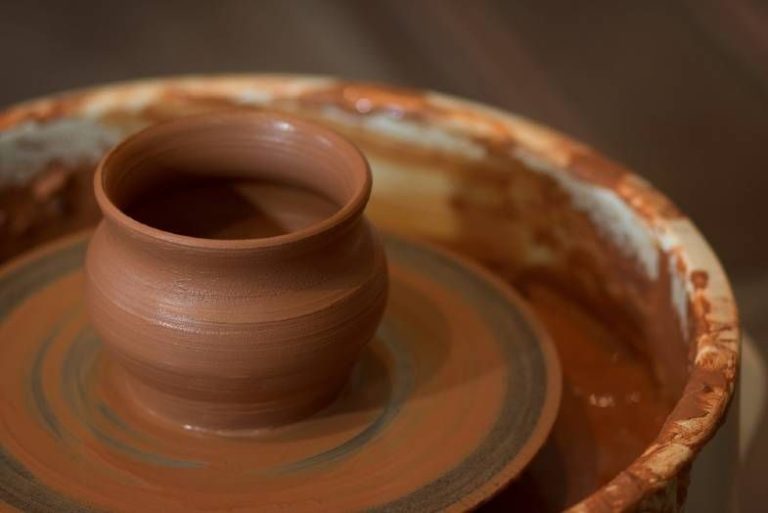How To Make Clay Ganesha In Usa?
Ganesha is one of the most beloved and iconic deities in Hinduism. The elephant-headed God of wisdom, good fortune and success is worshipped by Hindus not just in India but across the globe.
Especially popular is the tradition of creating and worshipping clay Ganesha idols during the 10-day Ganesh Chaturthi festival every year. The idols, ranging from small to giant, are usually sourced from artisans and workshops or crafted at home.
In recent decades, the Ganesha Chaturthi festivities have spread outside India too and the custom of installing clay Ganesha idols during the celebrations has become commonplace in Hindu communities across the USA.
Gathering Materials
To make your own Ganesha sculpture at home, you’ll first need to gather some basic supplies. The type of clay you choose is one of the most important decisions, as it will determine the finished look and durability of your sculpture.
Polymer clay is an excellent choice for beginning sculptors. It’s easy to work with, holds fine detail well, and doesn’t require additional firing or baking. Air-dry and modeling clays are other good options. Avoid clays that take a long time to harden or require a kiln.
You’ll also need some basic sculpting tools. A rolling pin helps roll out smooth slabs of clay. Sculpting knives, sponges, and silicone tipped tools allow you to shape, texture, and refine the clay. Picks help with detailing. You may also want clay safe glues and acrylic paints or other paints approved for the type of clay you are using.
For decorating your finished Ganesha, you can use paints, colored glazes, decoupage papers, faux jewels, fabrics, and other embellishments. Craft stores offer many options for customizing your sculpture.
Preparing the Clay
Properly preparing the clay is one of the most important steps before sculpting your Ganesh murti. Here are some tips for kneading and conditioning the clay to achieve the optimal consistency and moisture level:
Start by cutting off a workable amount of clay from your block. For a small to medium sized Ganesh murti, around 1-2 lbs of clay should be sufficient. Knead the clay vigorously with your hands for 5-10 minutes to warm it up and make it more malleable. This helps blend any moisture and makes the clay smooth.
As you knead, observe the consistency. Try pressing a slab of the clay between your fingers – it should be smooth and flexible, not cracking or crumbling. If the clay is too dry, add some water and continue kneading until absorbed. If too wet, add a small amount of dry clay. The clay should be smooth, pliable, and not sticky.
Before sculpting, form the clay into a ball. Use your palm to flatten and smooth it into a disk shape. This evens out the moisture and creates a uniform surface to begin sculpting your Ganesh idol on. Avoid overworking or kneading the clay once it reaches the desired consistency.
Keep the prepared clay covered with plastic wrap or a damp cloth to prevent drying out as you work. Maintaining the right moisture content in the clay is key for sculpting detailed features and textures.
Sculpting the Head
The head is the most important part of sculpting Ganesha. You’ll want to start with either an egg shape or a ball shape for the basic head form.
After you have the basic head shape, you can begin adding the details.
Use your fingers or sculpting tools to pull out a cylinder shape for the neck where it connects to the head. Make the neck approximately 1/3 the width of the head.
For the ears, tug and pinch 2 large flap shapes from each side of the head. Curve the flaps slightly to give the ears shape.
Roll a small cone shape for the trunk and attach it to the center of the face, just below the eyes. Curve the trunk so it droops down slightly over the upper lip.
Add a third eye to the forehead centered above the main eyes. This does not need to be an open eye, just indicate it with an oval or circle impression.
Refine the features until you have a detailed Ganesh head. Work symmetrically and keep proportions in mind as you sculpt.
Sculpting the Body
Once the head is complete, it’s time to sculpt the body in proportion to the head size. For a 6-inch tall Ganesha, the body can be around 4 inches tall. Start by rolling a ball of clay about half the size of the head and attach it below the neck.
Gently pull and pinch the clay to shape the body. Form a rounded belly, chubby arms and legs. Use your fingers to define the waist and neck folds. Add ornaments like necklaces, armbands, anklets or a belt as desired. Try to get smooth, defined shapes rather than leaving fingerprints in the clay.
Refer to reference images of Ganesha statues for proper proportioning. The body should appear natural and fluid, not too skinny or disfigured. Take your time to get the right size and flow before moving on.
Texturing and Detailing
This is the stage where you can really bring your Ganesha sculpture to life. Add textures to create the look of hair, clothing, and jewelry. You can use various clay sculpting tools to etch lines or patterns. For a fur texture, make lots of short strokes with a modeling tool. For cloth, you can use a roller tool to get draped or folded effects.
To add jewelry, etch bead or gem designs onto the clay. For a necklace, you can roll out a thin snake of clay and apply it around the neck. Add earrings and other ornaments to your preference.
Refine the face to sculpt Ganesha’s expressive eyes, trunk, and mouth. Look at reference images of Ganesha for inspiration. Consider the posture and hand positions you want, and adjust the limbs into precise poses. Sculpt the tusks and shape the ears. Mind the proportions as you hone in on the details.
Take your time perfecting the textures and details. This will bring your Ganesha sculpture to life and infuse it with your creative vision. The intricate embellishments will make your clay Ganesha truly special.
Letting it Dry
After you have finished sculpting and detailing your Ganesha statue, it is crucial to allow adequate drying time before painting. Clay shrinks and cracks as it dries, so letting it dry thoroughly helps prevent cracks from forming later. The drying time can range from a few days to over a week depending on the size and thickness of your sculpture.
As the clay is drying, you may optionally hollow out the inside of the sculpture while it is still soft and workable. This will help reduce cracking and breakage risks. To hollow out the statue, carefully carve out the insides using a loop tool, bamboo skewer or other carving tool. Avoid hollowing out thin areas like ears or the trunk. Hollow to about 1⁄2 to 1 inch thickness. Smooth the inside surfaces to prevent air bubbles from forming.
Set the hollowed sculpture in a warm, dry area out of direct sunlight. Turn it periodically so it dries evenly. When fully dried, the surface should be leathery and matte.
Painting
Choose acrylic paints made specifically for use with clay and ceramics. Avoid standard acrylic paint, as it cracks and dries poorly on clay surfaces. Clay paint is flexible when dry and bonds well with clay and terracotta. Select high-quality acrylic paints with rich, vibrant pigments for the best color results.
Use paint brushes meant for fine detail work, along with small foam brushes for filling in larger areas. Thin the paint to a milky consistency with water so it more easily flows into crevices and small details. Apply the paint in thin, even layers and allow it to fully dry between coats for smooth coverage without clumping or running. Start with base colors and then add shading, highlights, and accents. Be patient as applying multiple sheer coats produces a better overall effect than a single thick coat.
Consider adorning your Ganesha sculpture with decorative details like gems, glitter, beads and gold leaf accents. Affix embellishments after the base coats have dried but before applying a protective sealant. Let glue dry thoroughly before proceeding.
Varnishing
Varnishing a clay sculpture is an important final step to help protect and preserve your artwork. Applying a layer of varnish creates a glossy, transparent finish that enhances the sculpture’s appearance and prevents damage from exposure to dirt, dust and moisture.
There are a few types of varnish well-suited for clay:
- Polyurethane – Provides a durable, protective coating and keeps clay from yellowing over time.
- Acrylic resin – Dries quickly and leaves a crystal clear, water-resistant finish.
- Mod Podge – An affordable option good for indoor sculptures. Available in matte, glossy and sparkly finishes.
When applying varnish, it’s crucial to use thin, even coats and allow proper drying time between coats. Thick globs can yellow, crack and peel. Use a soft brush to apply varnish smoothly over the entire sculpture. Let the first coat dry completely, then do a second or third coat for best protection. Display your glossy, finished Ganesh with care to admire your handiwork!
Displaying
Once your clay Ganesh murti is completely dry and decorated, it’s time to display it properly for worship or admiration. Here are some tips for ideal placement and decor:
Placement Tips for Stability
Since clay is fragile, choose a sturdy surface for displaying your Ganesh. Avoid high shelves or the edges of tables, where it may be knocked over easily. Places like countertops, dressers, bookshelves, or wall niches are ideal. If displaying on a table, place your Ganesh near the back against a wall or stack of books to help support it.
To prevent toppling, position your Ganesh so the base and feet have the widest surface area in full contact with the display spot. Sculpt extra clay on the base bottom if needed. Also avoid bumping or moving the display furniture to prevent shaking and tipping.
Lighting Considerations
Proper lighting can highlight the beauty of your Ganesh sculpture. Place it near a window or lamp. Consider installing a directional spotlight. Candlelight offers a traditional ambiance. Avoid direct sunlight which may fade the colors over time.
Traditional Decorations
Adorn your Ganesh murti with items used in worship rituals. Fresh flowers, leaves, and petals look lovely around the base. Drape a colorfully embroidered cloth near the sculpture. Place a small dish of sweets, fruits, or coins nearby. Adding incense, lamps, or candles provides traditional atmosphere.




